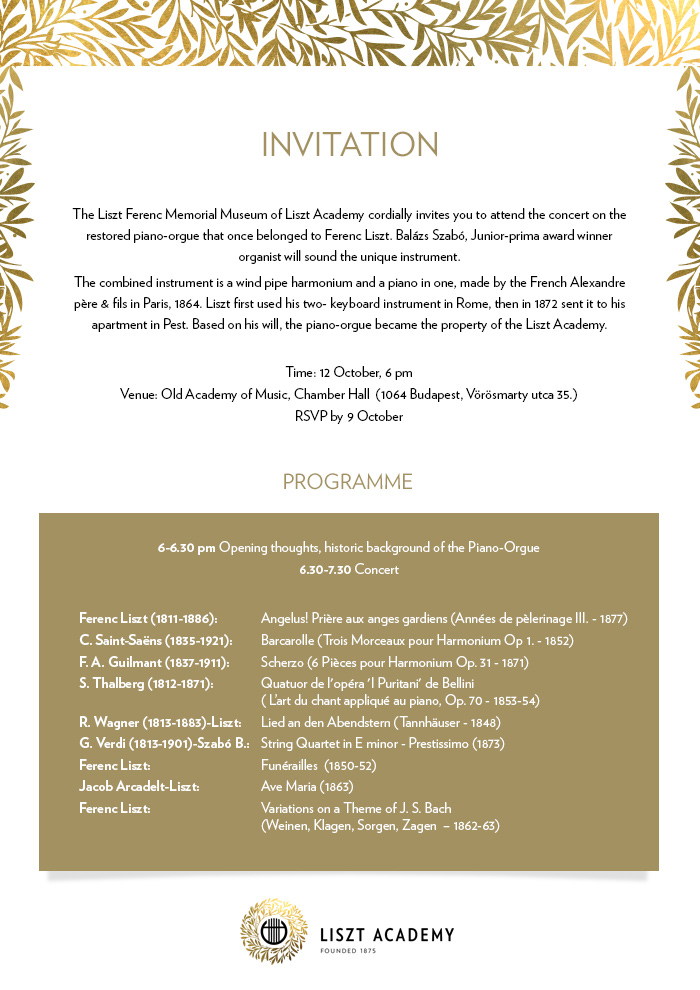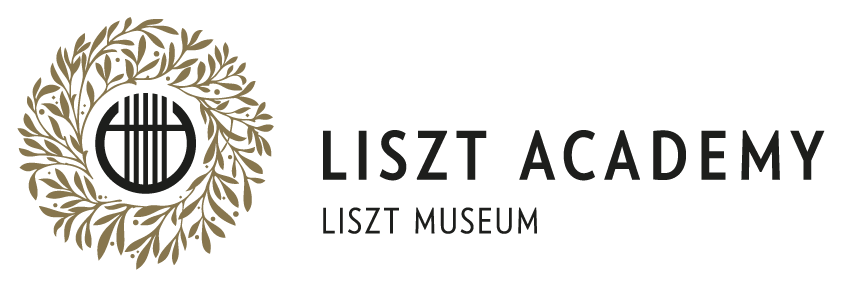October 12, 2013 concert in the Liszt Museum on the restored piano-orgue.
The Liszt Museum will host a concert by Balázs Szabó musicologist and organist on 12 October 2013 at 6 pm,. He restored the unique piano-orgue belonging to the Liszt heritage. The audience will not only hear some beautiful pieces by Liszt and his contemporaries, but the artist will talk about the instrument and also about the most interesting phases of the renovation process. The concert is part of the Fall Festival of Museums.
The combined instrument was restored by Balázs Szabó musicologist and organist in 2012-13. Financial support came from the Swiss Stiftung Kulturgut Orgel foundation. The outside of the instrument was reinforced and all aesthetic damages were repaired. The same was done with the harmonium: some elements had to be rebuilt, especially those responsible for producing the proper sounds. The instrument had been tuned to perfection. The Celeste pedal of the piano had been removed and renovated. The renovated Prolongement in the harmonium is a very unique structure; it allows the player to hold down any note or accord while playing. What makes this even more interesting is that Liszt used this technique quite often.
The outside of the piano was also reinforced and all missing or damaged parts were reconstructed, replaced. We took especially great care to preserve all original parts that were in the instrument when Liszt played on it.
THE INSTRUMENT
The combined instrument was made by the French Alexandre pére & fils in Paris, 1864. It is a wind (pipe??) harmonium and a piano built in one. Liszt first met Eduard Alexandre through Berlioz, and ordered two combined instruments during his career. The 7-octave piano was made by the Erard company, also a close acquaintance of Liszt, who did a lot during his Paris years to promote their instruments.
Liszt bought the biggest combined instrument made by Alexandre in 1854, the one carrying his name, the Piano-Liszt. It was taken to the music saloon of the Altenburg estate in Weimar. The first two keyboards and the first pedal of the three keyboard pedaled instrument plays the harmonium, while the third keyboard was used to play a concert piano made by Erard. The instrument has been restored and is a part of the Gesellschaft der Musikfreunde collection in Vienna.
Liszt first used his two keyboard combined instrument, the piano-orgue in Rome and later, in 1872 sent it to his apartment in Pest. Based on his will, the instrument became the property of the Music Academy.




